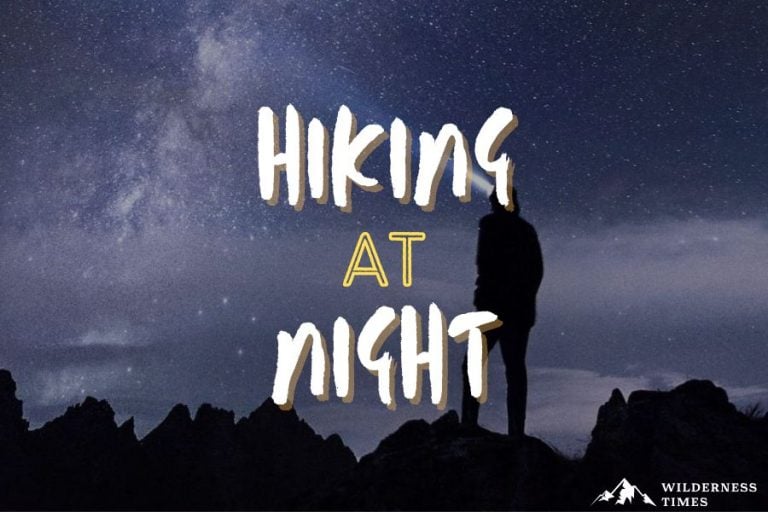You love hiking, but have never been hiking at night?
Now, I’m sure you have your concerns about it – many people do. But in reality, it’s the fear of the unknown speaking.
Hiking at night can be quite a rewarding experience, as long as you know how to make it as safe as possible. But that’s why we’re here today.
In this article, I’ll share with you everything you need to know about night hiking, from preparation to some of the best spots around the country.
Let’s dive straight in.
Table of Contents
ToggleHow to Prepare for Hiking at Night
Alright, let’s start with the absolute musts for night hiking.
Know the Trail
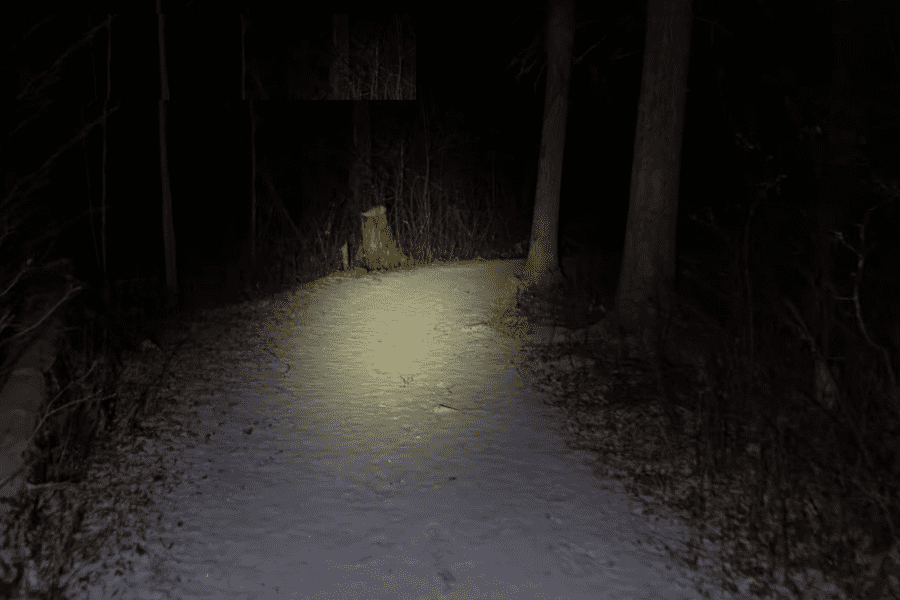
You want to know more about the trail you’re about to hike on.
If you are going to hike on a trail you haven’t been on before, make sure to thoroughly research it and see if you can find examples of others who have been on this hike at night.
Also, be sure to research the terrain. You should be aware of what you’re going to be hiking on – sand, mud, rocks or grass.
Imagine walking through wetlands without having an idea about the terrain around you.
With the diminished night vision, you can easily find yourself up to your knees in a pond.
Not to mention that holes and edges are much harder to see at night, which can potentially cause you to fall and hurt yourself.
But, if you hike on a trail that you’re familiar with, you already know what to expect.
Also See: Best Hiking Apps: Discover Trails, Track Hikes, and Offline Maps
Get some Flashlights & Headlamps
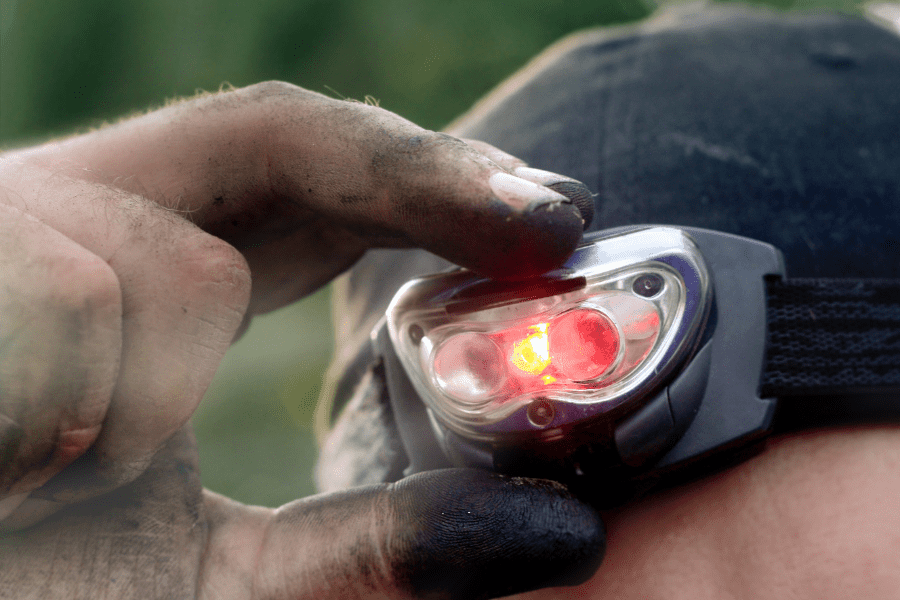
If I had to single out the most important piece of gear for night hiking, that would be a form of lighting.
And among different types, the best one would be a headlamp.
Not only does it let you use both hands at all times, but it also moves wherever you turn your head.
A flashlight is your second best option, since it’s lightweight and compact.
Plus, the batteries usually last a pretty long time.
But even if you pack a few illuminating options, that doesn’t mean you should use them at all times.
Instead, try to use natural light as much as possible. If the moon is visible, it is likely to provide enough light for your night hike.
Your eyes will adapt in time, and your night vision will improve, so you’ll be able to see better the nature around you.
Don’t Forget About Trekking Poles
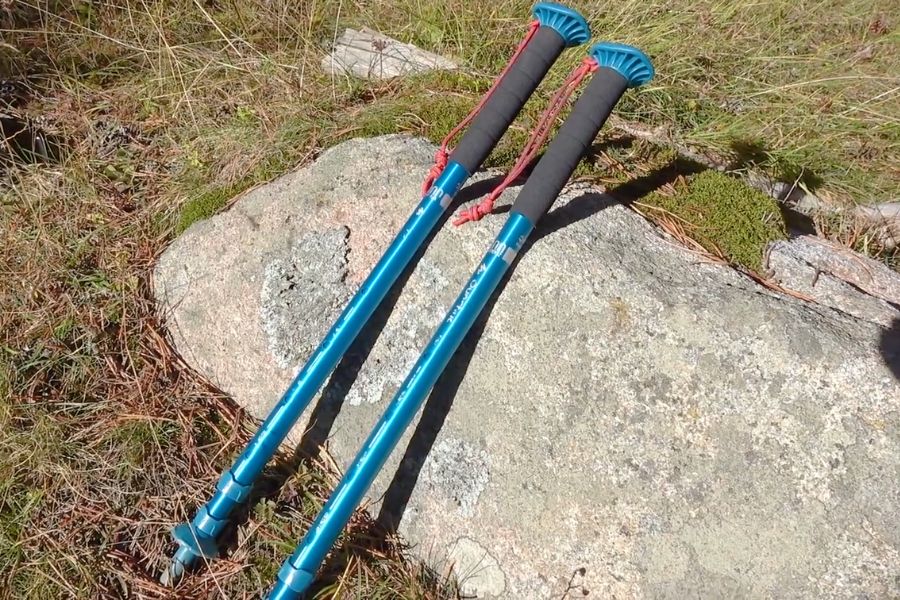
Regardless of what you might have heard, trekking poles are for everyone – young or old, beginner or a pro.
The extra stability they provide can be quite handy at night, when your vision is impaired.
Plus, let’s not forget the boost they give you when you’re ascending.
They relieve your joints and ankles from too much stress from going uphill.
Read: Knee Pain After Hiking
Bring Extra Layers
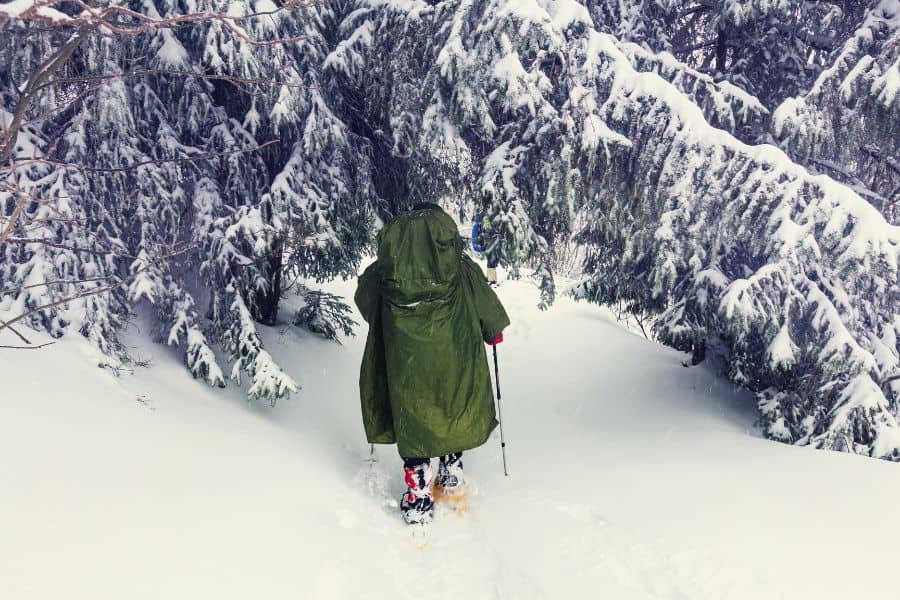
As you already know, the nights can be much cooler than the days when you’re out in the wild.
Sometimes, you can’t predict exactly how cold it can get. But what you can do is prepare.
Dress accordingly for the weather when you’re starting the hike, but bring a few additional layers as well.
As the temperature starts dropping, you can easily adjust how comfortable you are by putting on a jacket or a hat, for instance.
Nights can also be quite windy. Make sure to pack something that’s windproof, to protect yourself from the breeze.
Hike on Nights When the Moon is Clear
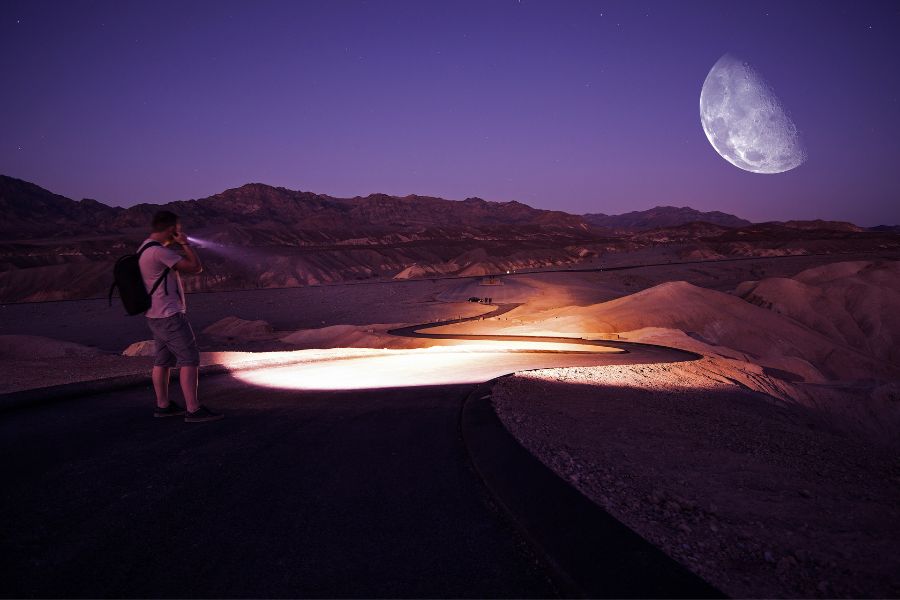
The moonlight can give you enough vision that you might not even need a headlamp throughout the majority of your hiking trip.
This is especially handy if you’re hiking at night for the first time.
Pack Food and Water
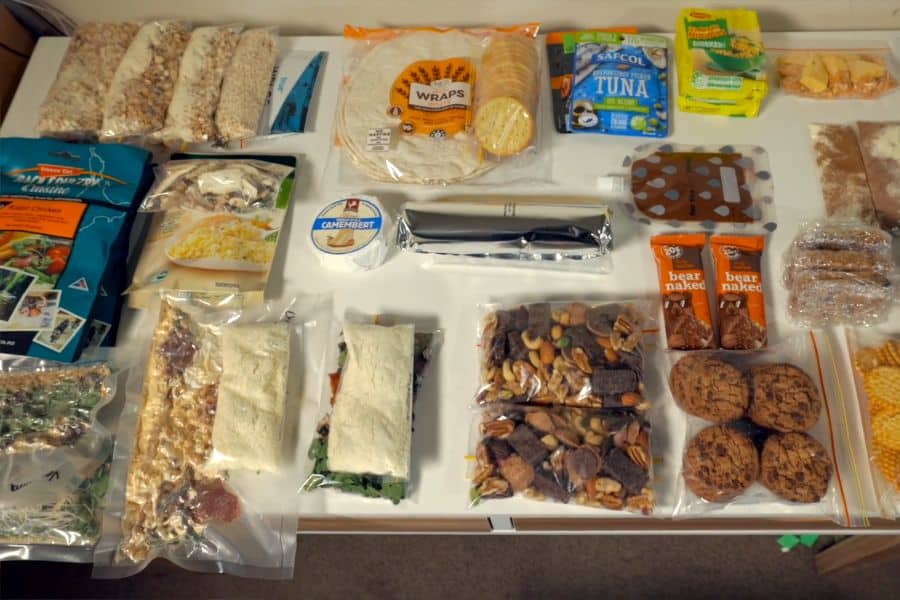
Be it day or night, maintaining hydration is always important. Make sure to pack enough water for the entire length of the trip.
Read: How Much Water To Bring Hiking
Or, if there are water sources nearby, bring some type of filtering method with you.
Of course, the same goes for food. Pack the snacks that will give you enough energy to walk the trail.
Finally, remember to always pack your trash. Leave everything as it was before you pass through there.
Wear Boots with Good Ankle Support
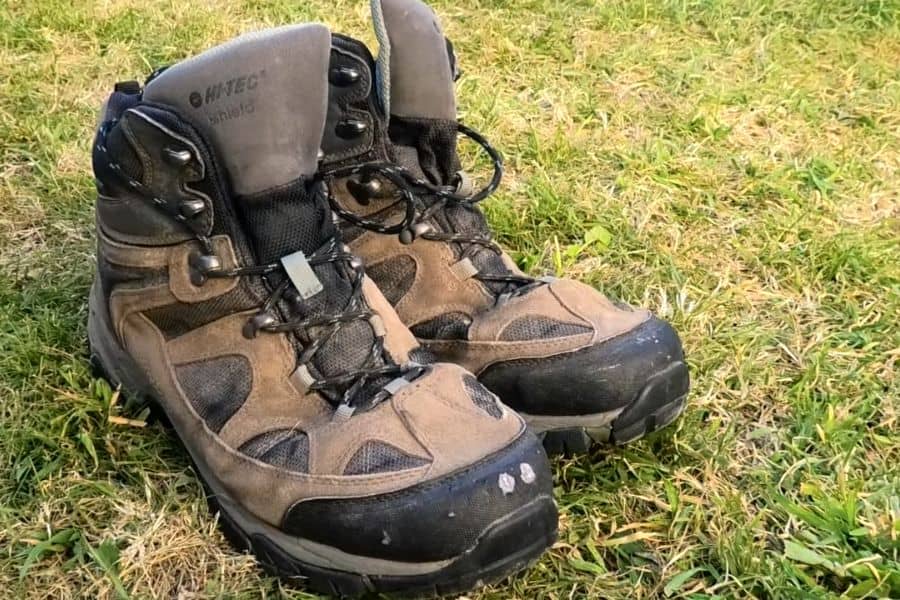
I’m sure that the last thing you need on a hike is a twisted ankle.
Not only would it destroy your trip, but prevent you from going to another one for at least a few weeks.
Well, there’s a pretty high possibility of that happening when you’re walking with rather impaired vision on uneven terrain.
Wear Reflective Clothing
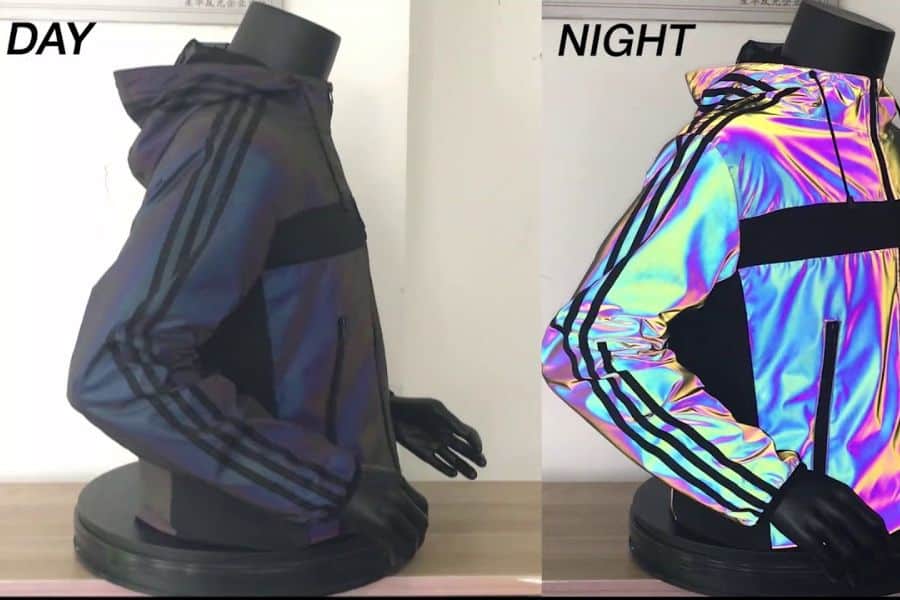
You don’t just want to see other things around you, but also to be seen.
Whether it’s another hiker or an animal, other living creatures around you should be aware of your presence.
This is especially true in the case when you’re hiking near a road. For this reason, wear reflective clothing.
Bring a Cell Phone for Emergencies
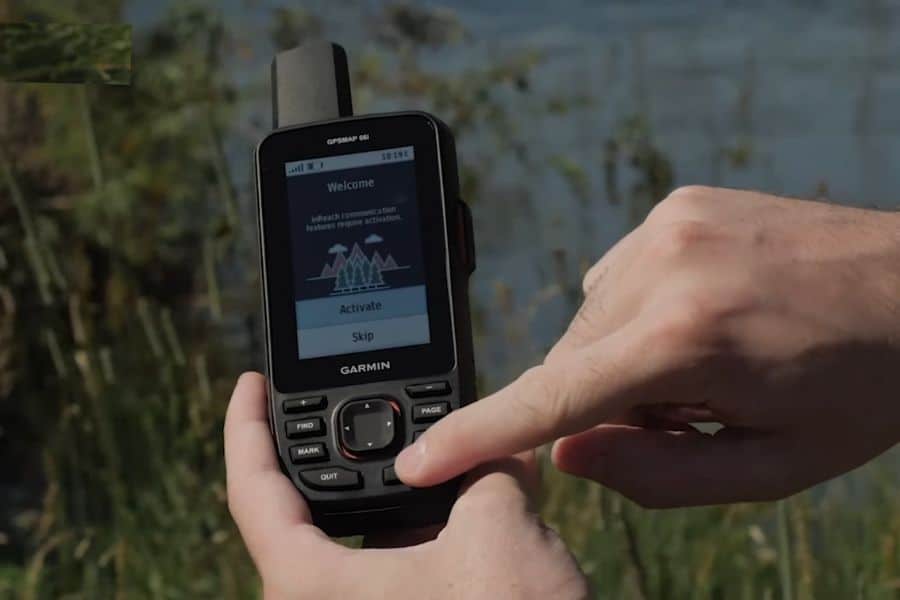
Accidents can happen, be it day or night. But at night, there’s less chance of someone crossing paths with you.
So if you get injured, you might not be able to get help before dawn.
Read: The Ultimate Guide To The Ten Essentials
For that reason, you should always have a cellphone packed and charged.
If you want to keep it turned off during your hike, then by all means do so. But at least have it with you in the case of an emergency.
Map your Route
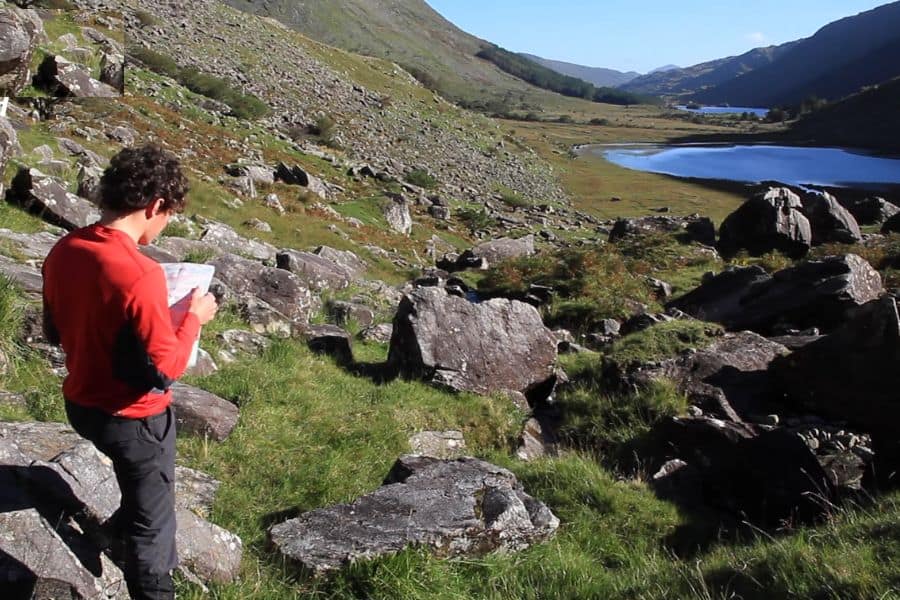
This is especially important in case you’re hiking alone. Plan your trail before hitting the road, then map the route.
Share it with your friends or family members. In case something happens, they’ll have a rough idea of where you might be.
Reasons you Should Hike at Night
There are many reasons why everyone should experience night hiking at least once in their lives.
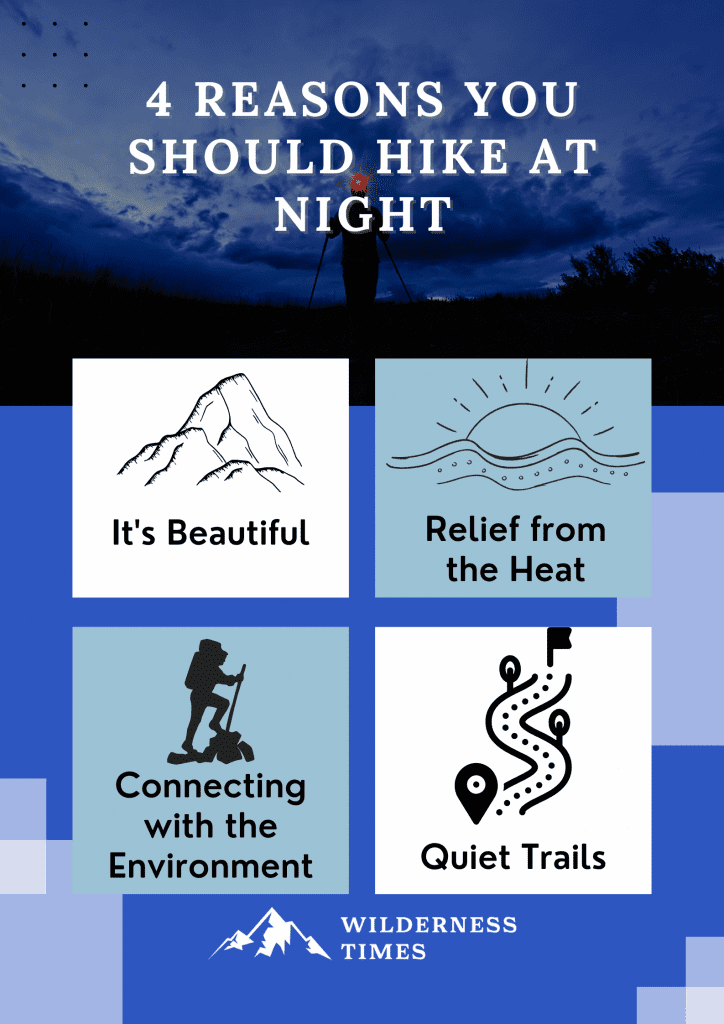
It’s Beautiful
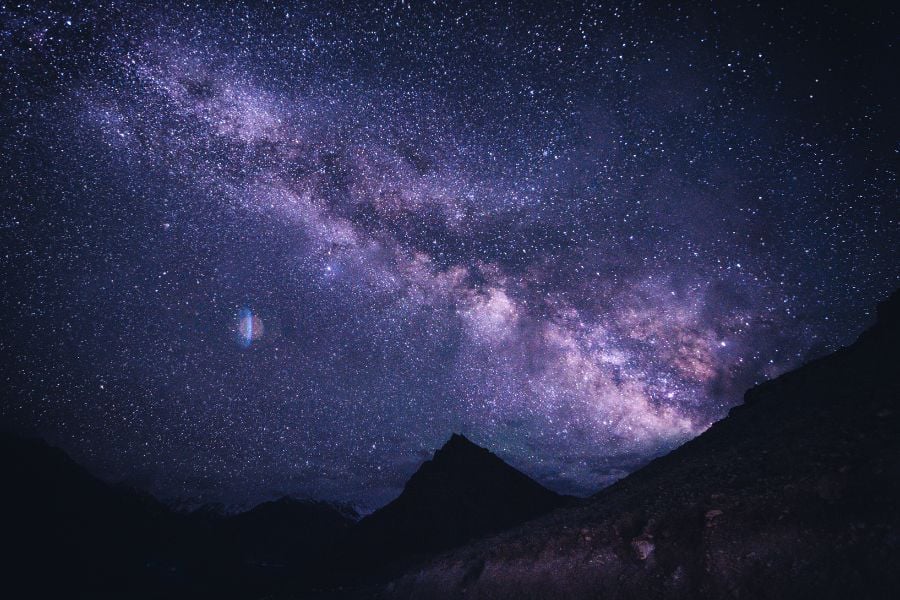
Do I need to say much on this matter?
Just look at the sky! Without the flashing city lights, you can really see the beauty of a starry night.
You can look for stars and constellations usually visible from your location.
Depending on how dark the sky actually is, you might catch a glimpse of the Milky Way’s hazy band.
But the beauty is down there as well. Everything around will look completely different at night.
Oh, and don’t forget about nocturnal animals that come out at night. Even at night, nature isn’t silent.
Relief from the Heat
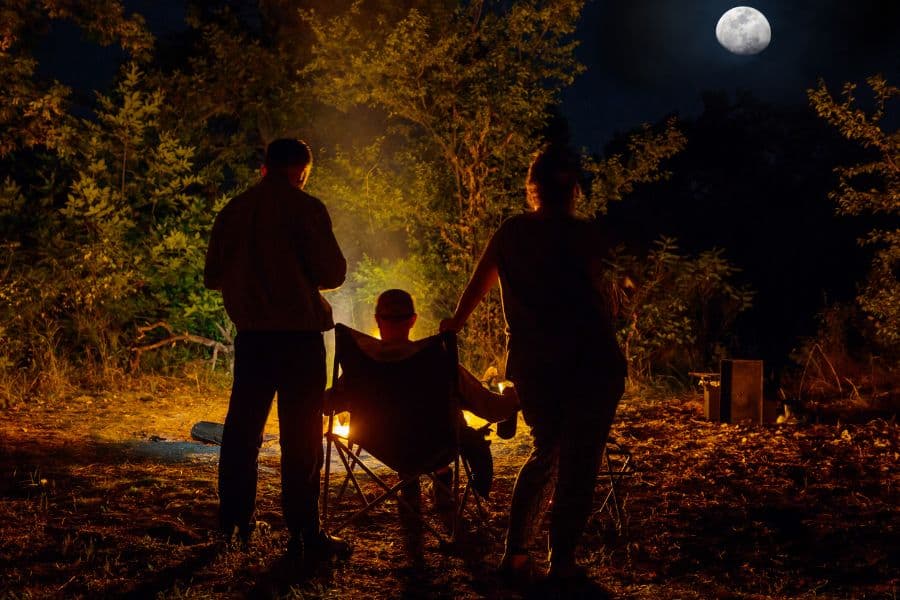
Depending on where you are, day temperatures can get pretty steamy during the summer months.
Going hiking in such a climate doesn’t sound like a fun thing to do. In fact, it can get rather uncomfortable.
But without the sun scorching your skin, walking is much easier.
Plus at night, the temperature can drop quite a few degrees, depending on the location.
Connecting with the Environment
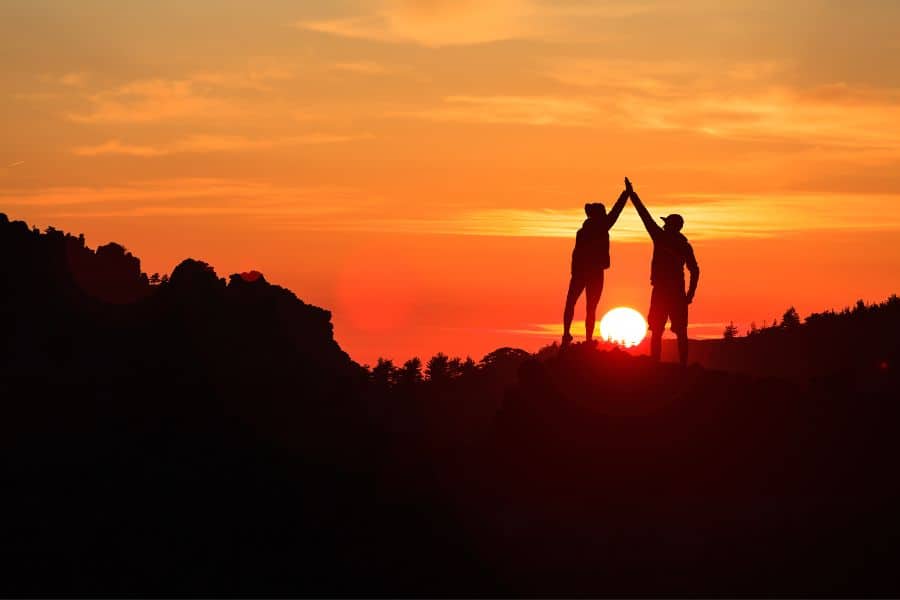
Not going to lie, living a fast-paced city life can get us disconnected from our surroundings.
But if you really want to feel one with nature, go for a night hike.
First, your vision is impaired. And that’s what we’re going for. Because you don’t see around you that well, your other senses will be enhanced.
You’ll be able to hear sounds you don’t notice during the day, and smell things you don’t detect.
Quiet Trails
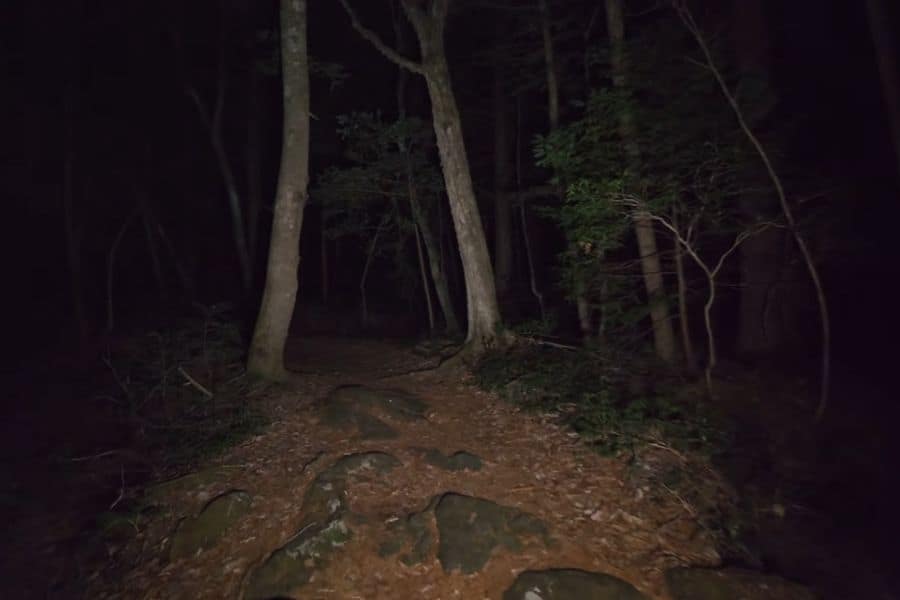
There’s a much lower chance of encountering other people on the trail at night.
This means the trail will be much quieter. You’ll be able to hear your thoughts and think clearly, without interruptions.
You’ll also be able to hear your surroundings really well. The branch falling, owls cooing and even squirrels going up and down the tree.
Reasons you Shouldn’t Hike at Night
However, hiking at night has its own risks making it even riskier than hiking during the day.
You Need to Be Extra Careful With Your Route
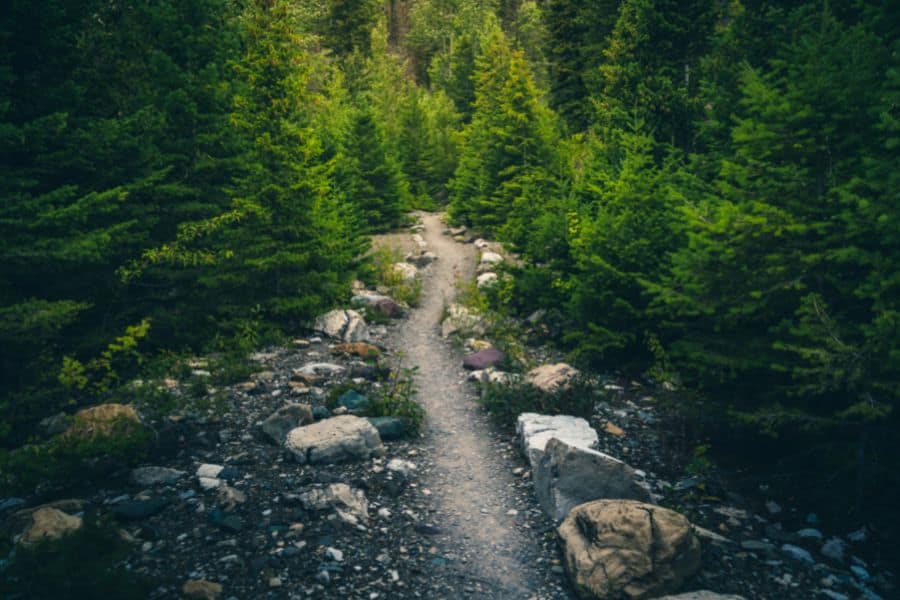
At night, you can orientate by just looking around you.
Even during a clear moon and with a flashlight at your disposal, you’ll have a pretty vague idea of things around you.
For that reason, stay on the route and avoid going through areas you’re unfamiliar with.
Furthermore, be extra careful where you set your foot.
Rocks and holes on the trail can be difficult to see at night, and one wrong move can get you injured.
Feeling Tired on the Trail
Unless you have an odd working schedule, you’re probably asleep at night.
But to go on a night hike, (depending upon the length), you’ll might have to switch your sleeping schedule. And that’s not always easy.
Plus another risk regardless of your sleep schedule, is that you might feel extremely tired on trail if you are used to sleeping at that time.
What works for me is getting some rest with a midday nap.
Of course, you can potentially plan a shorter hike that starts at say 7 pm and ends by 9pm. That is probably best for a night hike, especially for beginners.
Missing the View
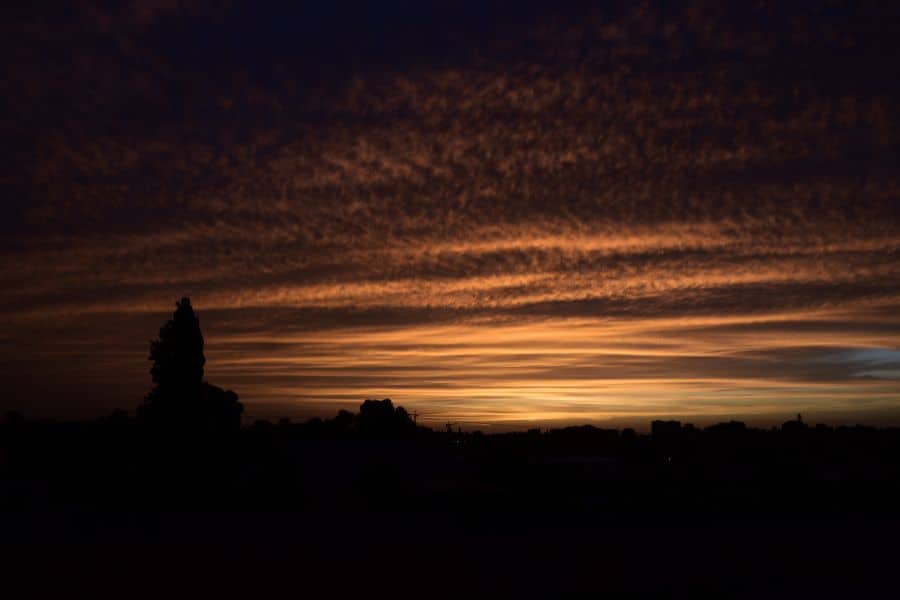
Now I know I’ve said that nature is beautiful at night. But no matter how amazing the night sky might be, you’re still missing out on the actual landscape.
The high mountain peaks, the beautiful horizon and those colorful birds on the tree – you can’t see that.
Getting Lost
Close your eyes and make a couple of turns. Want to bet you won’t be sure which way you just came from right off the bat?
It can be pretty hard to stay on the trail at night. Unless the path is properly marked, you’ll have to be really careful where you’re going.
Never go hiking at night without a map and a compass to orientate yourself and see if you’re on the right path.
Of course, a GPS tool will be of use as well.
Pay attention to distinctive points on the trail, like a lake or a meadow.
Once you reach those landmarks, you’ll be sure you’re heading in the right direction.
Where to Go Hiking at Night
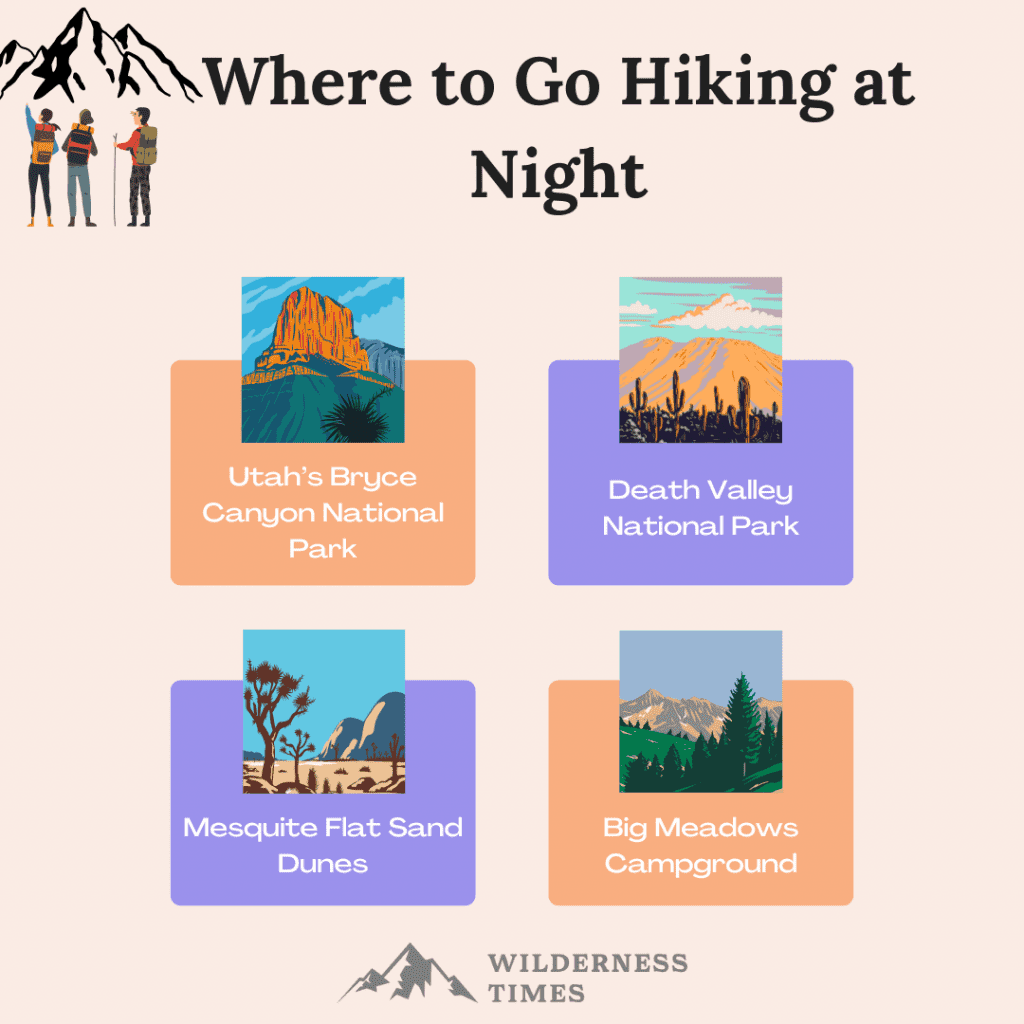
Don’t just pick a random hiking trail and go there at night.
Not only because certain trails can be very dangerous in such conditions, but also because the views might not be that great.
I’ll share with you some incredible places around the States where you can truly experience the beauty of night hiking.
Utah’s Bryce Canyon National Park
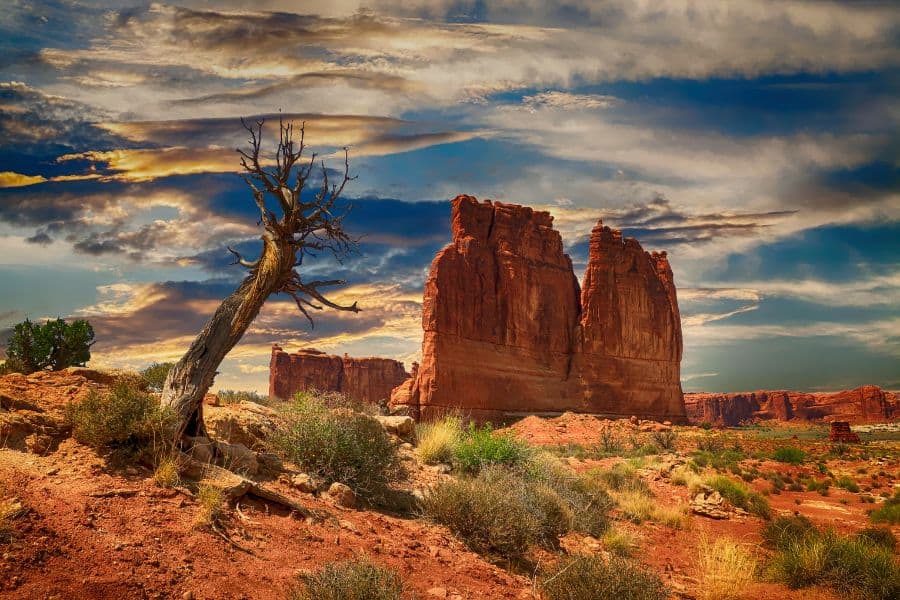
This national park is a great place to go at night. The sky is something else here.
It’s said you can see up to 7,500 stars from Bryce Canyon, clear and bright. (source: brycecanyoncountry.com)
One of the oldest astronomy programs in the nation is right here in this national park, so if you’re going there, put it on the bucket list.
For the best experience, go during the full moon phase. The shadows from hoodoos are mesmerizing and even slightly eerie to see.
Death Valley National Park
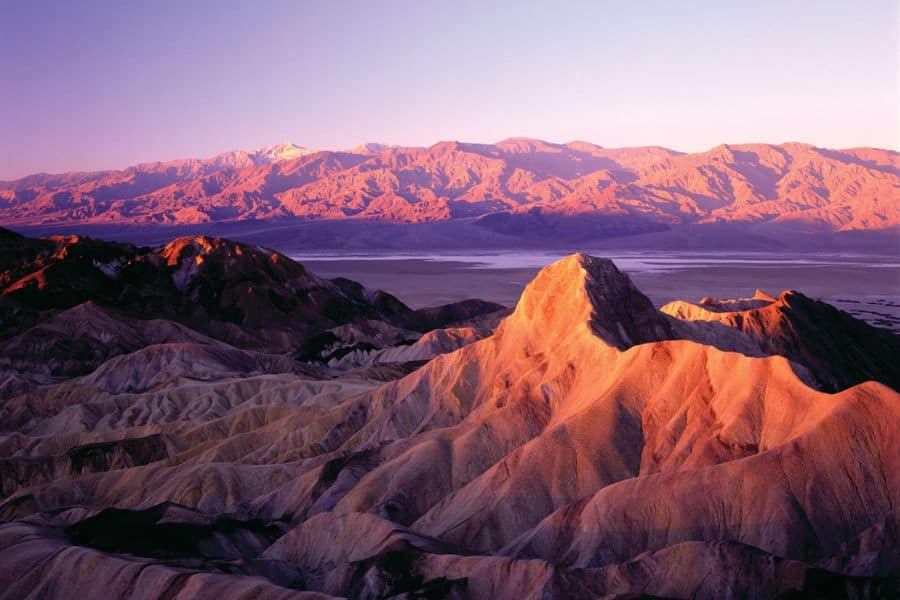
According to the classification by the International Dark-Sky Association, the night sky in the Death Valley is the darkest it can get.
Now can you even imagine how bright the stars must be?
Ubehebe Crater is the place to be in Death Valley for stargazing. It’s an old volcanic crater from where you get a unique view of the surroundings.
Mesquite Flat Sand Dunes
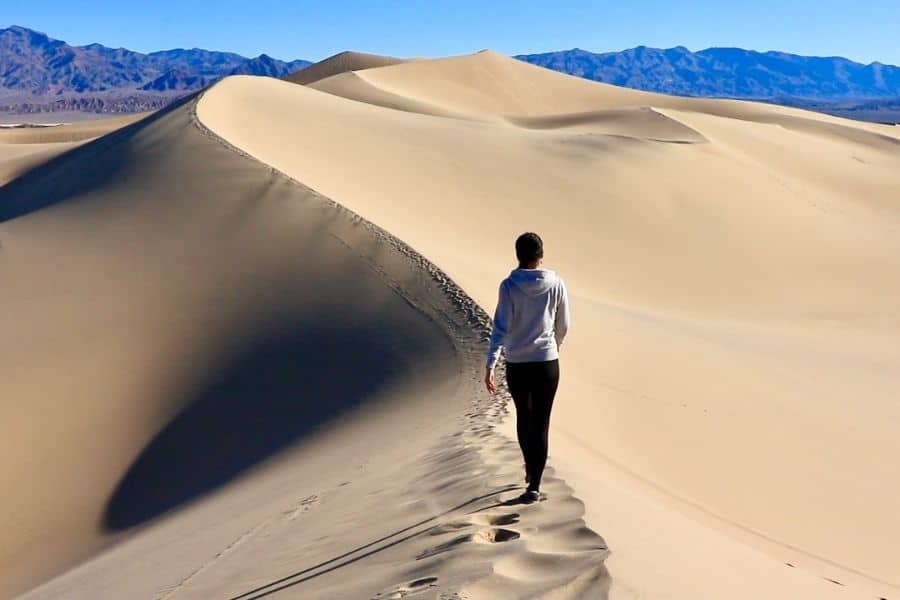
While Mesquite Flat Sand Dunes are a great area for stargazing, but even better for watching sunsets and sunrise. Seeing a rainbow of colors melting into the sand is really something.
What I especially like about this place is the wildlife that lives there.
Since the desert gets really hot during the day, the majority of its inhabitants only come out at night.
Big Meadows Campground
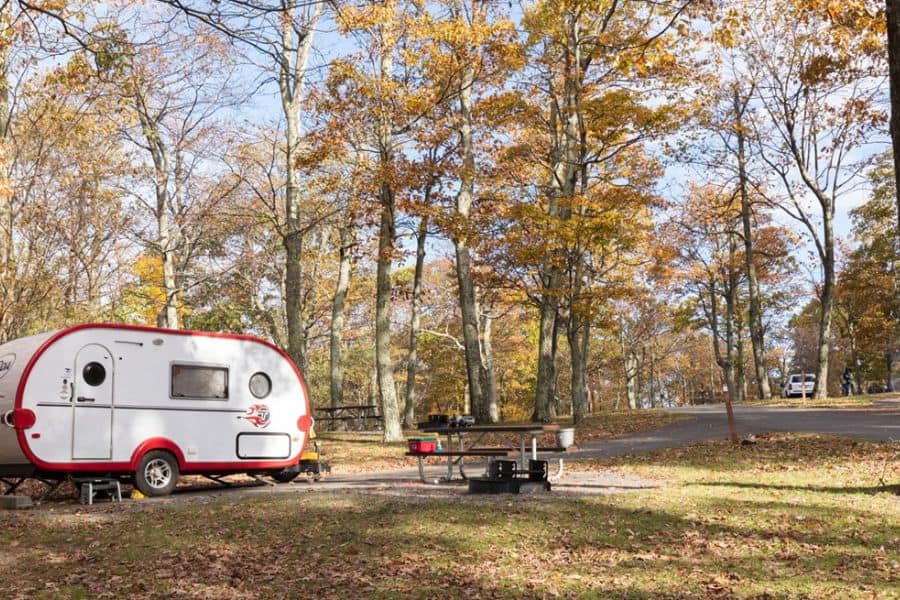
The Big Meadows Campground lies in the middle of the Shenandoah National Park and the 105-mile stretch of Skyline Drive.
This place is as beautiful at night as it is during the day. Make sure to find a good spot to watch the sunset from, as the views here are worthy of your wallpaper photo.
Lighting for Hiking at Night
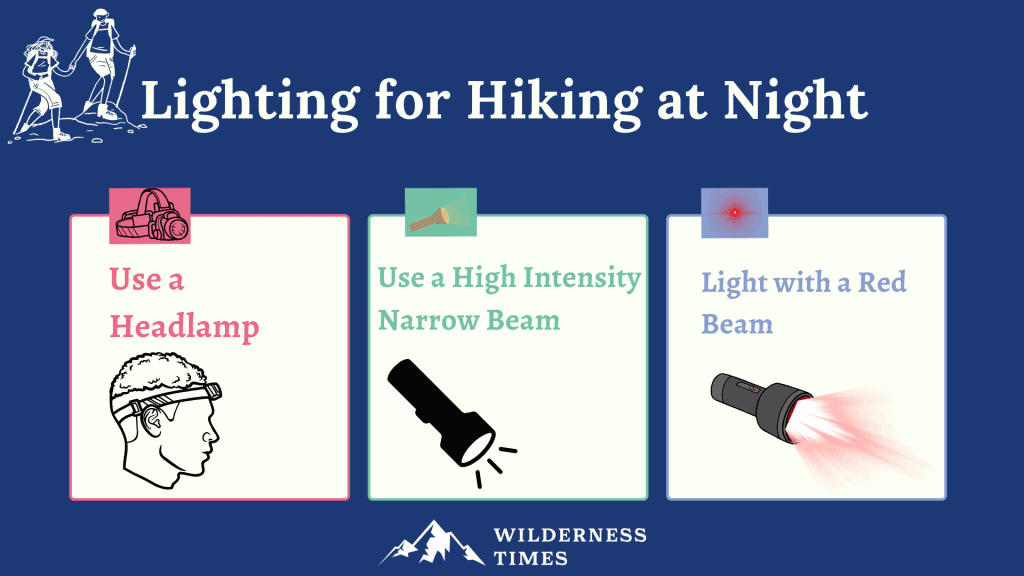
Lighting is a must, but what type of illumination to bring along?
Use a Headlamp
I’m a big fan of headlamps. You put it on your head and forget about it.
You turn – the headlamp turns with you, enlightening the path ahead. Plus, you have both of your hands-free for other things.
Headlamps are generally affordable, and you can get them in pretty much any hardware, big box or outdoor store.
Use a High Intensity Narrow Beam
You should also have a high intensity narrow beam for situations where you need better visibility.
For instance, if you encounter difficult terrain ahead or need to find something you lost on the ground.
Light with a Red Beam
Among all the options, red light is the best for night hiking.
Red light is much easier on the eyes, as it doesn’t shrink your pupils after looking at it for a bit longer.
What’s more, because it’s not that bright, red light won’t disturb the sound asleep wildlife.
You’ll have an easier time passing by without disturbing the animals in your surrounding.
Finally, red light uses less power, so the battery will last longer than white lights.
Tips for Using a Headlamp
Okay, so you’ve bought a headlamp, now what?
Here are some tips on how to use it properly.
Get a Red Light
I’ve already talked about the benefits of a red beam. If you find a model that has both red and white light settings, and that fits your price limit and hiking needs, get it.
Then, you can switch between the two colors depending on the situation.
Look for Multiple Brightness Settings
You won’t always need the same amount of light. For that reason, a headlamp with different brightness options can be handy.
That way, you can use just the right amount of light every time. Plus, you won’t unnecessarily waste the battery life of the headlamp.
Get a Comfortable Fit
Make sure you can tighten the strap to keep the headlamp on without it falling off.
What’s the pound of a headlamp if you have to hold it in place with your hand?
Never Shine Your Light in Someone’s Face
If you see other hikers crossing ways with you, turn the light in a different direction.
By shining light into their face, you’ll slow them down. You see, all that time spent building up night vision will be in vain.
Turn it Off
Don’t rely on a flashlight to guide your way through the trail. Whenever possible, turn it off and practice your night vision.
That way, you’re not bothering anyone you might encounter on the trail, be it animal or human.
Gear You Should Have for Night Hiking
There are a few things that are an absolute must for hiking at night.
Headlamps
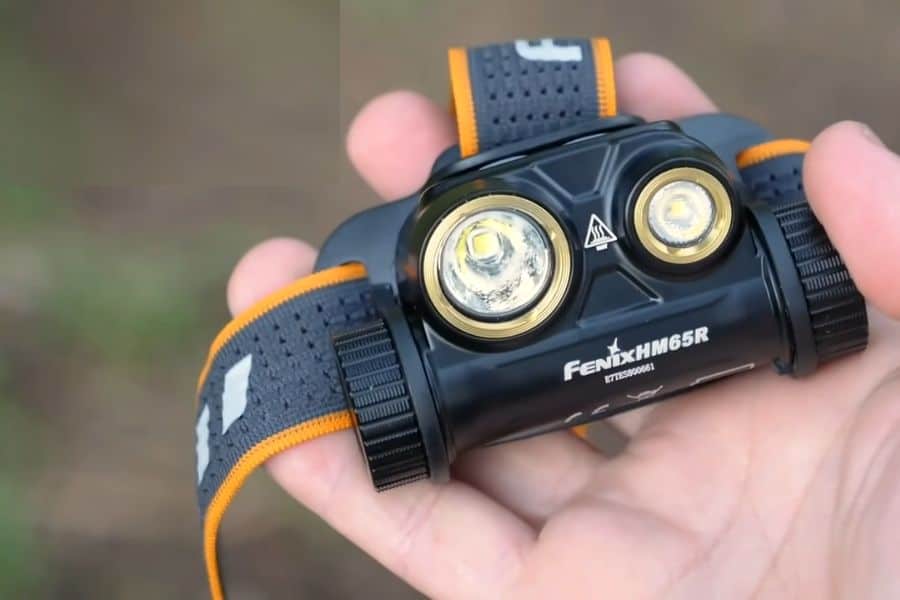
This one doesn’t come as a surprise. A headlamp is an invaluable tool for night hiking. Luckily, you can get it for cheap in a variety of stores.
But you won’t go wrong by investing a bit more.
More expensive models usually have different brightness options as well as light colors. Plus, their batteries last longer and charge faster.
Flashlights
You should always have a backup lighting option, in case the primary one fails to work.
You never know what can happen, from a dead battery to a broken headlamp.
Batteries

What’s the good of bringing illuminating options if you can’t power them? Make sure to have enough batteries for all your devices, from lamps to GPS trackers.
Sturdy Shoes
You might get by with just light fitness shoes when hiking during the day, but doing that at night is a whole different story.
You can easily misstep and hurt your foot on the boulder or step into mud.
Without adequate vision, you won’t be able to see every single rock on the path.
But with sturdy and supportive shoes, you may protect your feet from injury.
GPS
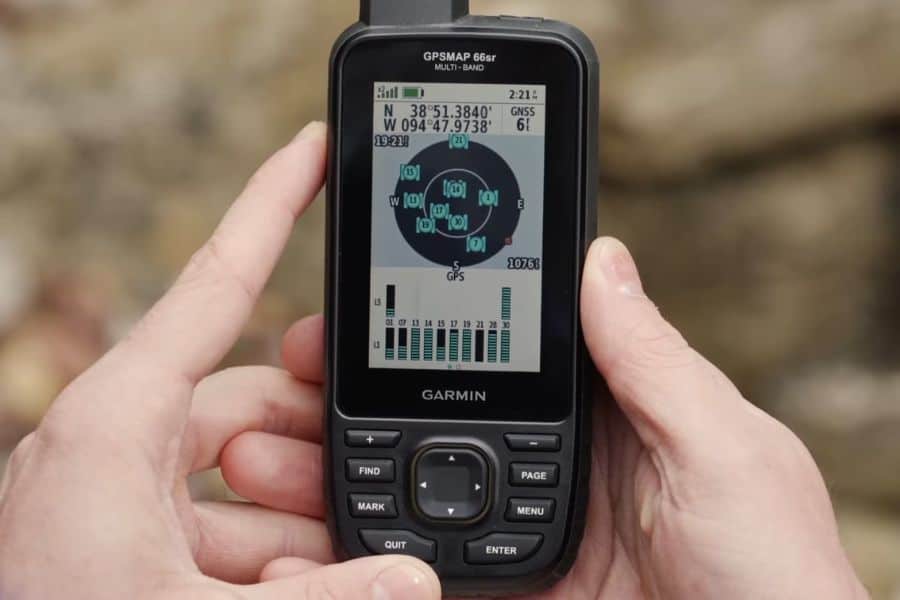
When you’re out in the wilderness, you can’t always rely on your phone.
The reception is, more often than not, pretty bad because the signal is interrupted from all the hills around you.
Plus, the battery on your phone can die at a much faster rate when the weather gets chilly.
For these reasons, you should also get a proper GPS device.
These things work in remote areas and will be an invaluable tool when trying to find your location.
FAQs
What is the best way to start a night hike?
When you’re trying hiking at night for the first time, it’s always better to go with company.
Be it a group of friends or a hiking club, having people around you can make a night hike much safer and easier.
When picking a trail, go with the one you’re familiar with.
Since you have a general idea of what you might encounter along the way, you’ll have an easier time finding your way around at night.
What is the best light source for hiking?
A headlamp is arguably the best light source for hiking. To direct the light beam, you just move your hand left and right or up and down.
Both of your hands are free, so you can use trekking poles to make walking on harsh terrain easier on your joints.
What is the best trail to hike at night?
The best trail for a night hike is the one you’re already familiar with. Since you know what type of terrain to expect, you’re less likely to get caught off guard by obstacles on the trail.
Avoid very difficult and dangerous trails, such as canyons, as your impaired vision can get you into unsafe situations.
Ideally, choose a trail with open view, as you want the moonlight to provide you with night vision necessary for enjoying the ambient.
What are the dangers of hiking in the dark?
The main danger of hiking in the dark lies in low visibility.
Since you can’t see far into the distance, you have to always be prepared for unexpected circumstances – be it a fallen branch or a deep puddle on the trail.
Another danger you should be aware of is wildlife. The majority of mammals are nocturnal animals, meaning that’s when they come out to hunt.
There’s a much higher chance of encountering them on the trail at night than it is during the day.
To Sum Things Up
Hiking at night can be quite an unforgettable experience.
A different view, cooler temperatures, and connecting with nature are good enough reasons to consider taking up this activity.
True, night hiking poses certain risks. But as long as you do a bit of preparation beforehand, there’s no reason why your hiking trip should be a successful one.


